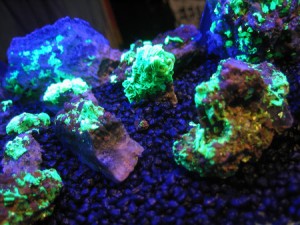Published on Tuesday March 13 2012 (AEST)

China plans to import more uranium this year than last year and to buy uranium mines abroad, looking particularly toward Canada for that purpose, said Qian Zhiming, deputy director of the National Energy Administration.
Qian also said China might resume undertaking nuclear projects this year, in the first half of the year at the earliest. He said the Chinese government has finished drafting the nuclear safety guidelines that it began working on after a devastating earthquake and tsunami struck Japan a year ago, crippling the country's Fukushima Daiichi nuclear plant.
Even though that disaster prompted the country to halt any work being undertaken on new nuclear projects, China imported 16,126 tons of uranium in 2011, not much less than the 17,135 tons it had imported in 2010, according to the General Administration of Customs.
Qian said the import amount will remain the same as last year, or even be increased, in 2012.
The soonest that resumption of nuclear projects will happen, Qian said, is in the first half of the year.
Wang Binghua, chairman of State Nuclear Power Technology Corp, said last Saturday at a news briefing that China will resume approving and building new nuclear projects in 2012. The government also has completed a safety inspection that revealed 14 nuclear safety issues that should be remedied.
Following the nuclear leak that struck Japan last year, the Chinese government announced it would temporarily cease approving nuclear power stations. Around the same time, it began to conduct safety checks at both existing nuclear plants and those that were under construction.
Because of those decisions, no new nuclear project was either approved or started in China last year.
Premier Wen Jiabao, in an annual government work report delivered on March 5, said China will "develop nuclear power in a safe and efficient way" this year, saying the country will "prohibit blind expansion in the new-energy industries of solar and wind power".
In December, new nuclear safety guidelines for China were submitted to the State Council. Officials are still drafting guidelines for developing nuclear power in the mid- and long-term.
China began operating its first commercial nuclear plant in 1994. The country, which has 15 nuclear reactors, is now building at least 25 reactors and has 50 more planned, according to the China Nuclear Energy Association.
2012 Chinese Uranium Imports
The prospect that nuclear projects will be started again this year is not the only reason behind China's prediction that it will import more uranium in 2012.
Another is the likelihood that "a few overseas mines will start production this year," according to Xiao Xinjian, industry expert at the Energy Research Institute, which is affiliated with the National Development and Reform Commission.
Of all the countries that supply uranium to China, the top four exporters are Kazakhstan, Uzbekistan, Namibia and Australia. They contributed more than 95 percent of China's imports of that element last year.
During Canadian Prime Minster Stephen Harper's recent official visit to China, China and Canada agreed to cooperate more on the trade of uranium.
China Guangdong Nuclear Power Group Co has offered to buy 261.9 million shares from Kalahari Minerals Plc, a global resource company owning uranium and gold reserves. The deal, which concerns 98 percent of the ownership of Kalahari Minerals, was approved in February.
China can produce 850 tons of uranium a year, an amount expected to increase to 2,500 tons in the future, according to Ux Consulting, a researcher that looks mainly at uranium.
 Australian Uranium News - Research
Australian Uranium News - Research




